https://www.youtube.com/watch?v=BdQniERyw8I
How to Write a Professional Resume in 2023 [A Step-by-step Guide with Successful Resume Examples]
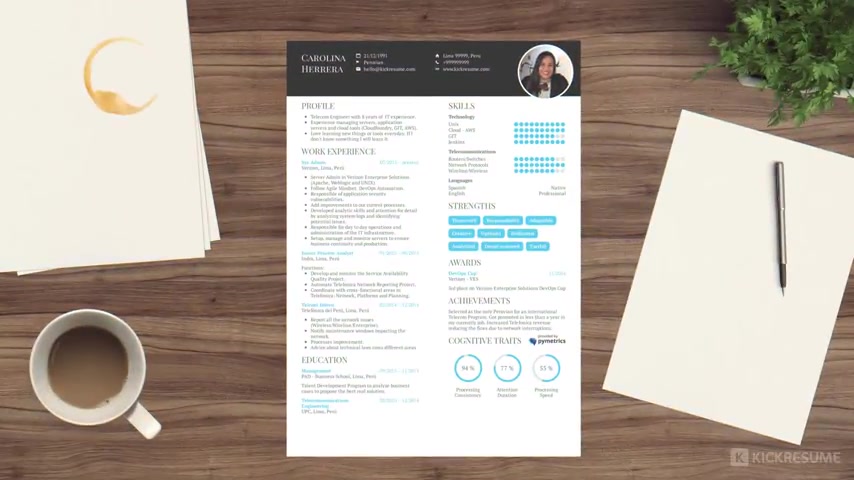
Hi , we're at key resume dot com and we're going to show you how to write a resume .
They will get you invited to any job interview .
Let's start with this resume example , we'll be going through each part of it to show you how it's done .
By the way , this is a real resume .
It was written by Carolina and it got her a job at Amazon .
So you could say it's pretty good for more resume examples by real people .
Check out our resume library , you can find the link in the description below .
There are hundreds of resume examples there .
Your resume should begin with your contact details .
They should go at the very top of the page and this section only serves one purpose really to give your future employer a way of getting back to you .
So include your name there , your phone number , email address , perhaps even a website or portfolio if we have one and that's it .
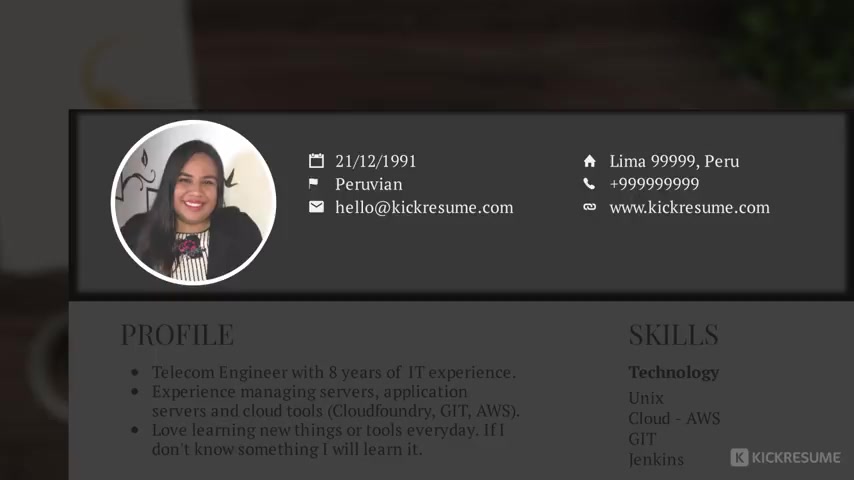
Sometimes you also might want to include a photo , but that depends on the country and the position you're applying to describe yourself in three sentences .
That's what the profile section is all about .
Always open with your job title and years of experience , you know , to let the employer know who they're dealing with .
You should also brag a little pick two or three of your most impressive accomplishments and describe them in as few words as possible if you can squeeze some numbers in even better .
Remember , first impressions matter and your profile is the first thing everybody is going to read .
So make it worth a time .
The second thing people will pay attention to is your work experience .
So mention your most recent experience first and work your way back from there under each job include a short summary of your accomplishments .
But remember , write about your accomplishments , not your responsibilities after all .
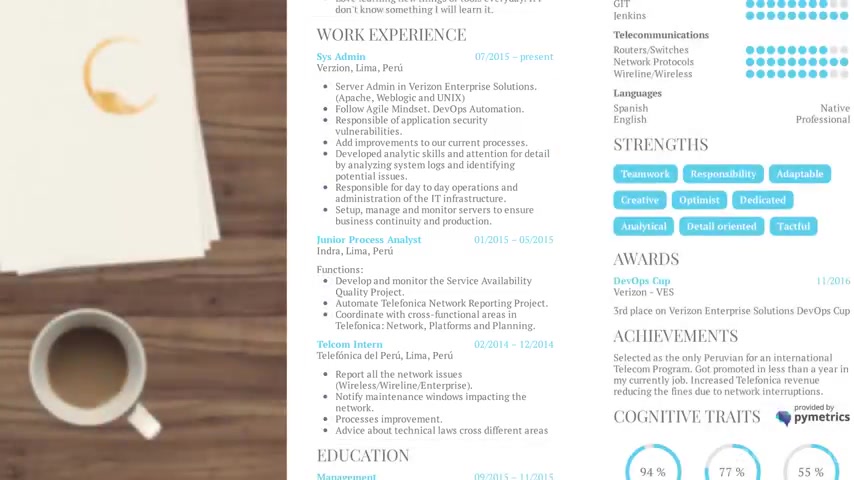
What you actually did on the job is far more interesting than what you were supposed to do .
Write in the past tense to help you maintain that distinction .
That is unless you still work there , finally use bullet points .
Everybody hates reading through walls of text , bullet points will make your resume much easier to read .
Let's take a look at the education section .
Now , if you're already a seasoned professional , it doesn't have to be too long .
Just like on this resume .
Example , on the other hand , if you're a student or a fresh graduate , you might want to include additional details .
Let's say your GPA was good .
Well , then you should mention it .
The same goes for a dean's list and any scholarships you got over the years , skills , skills are often misunderstood because well , skills are not traits .
While traits you are born with skills you have to learn , for example , things like html or speaking in a foreign language .
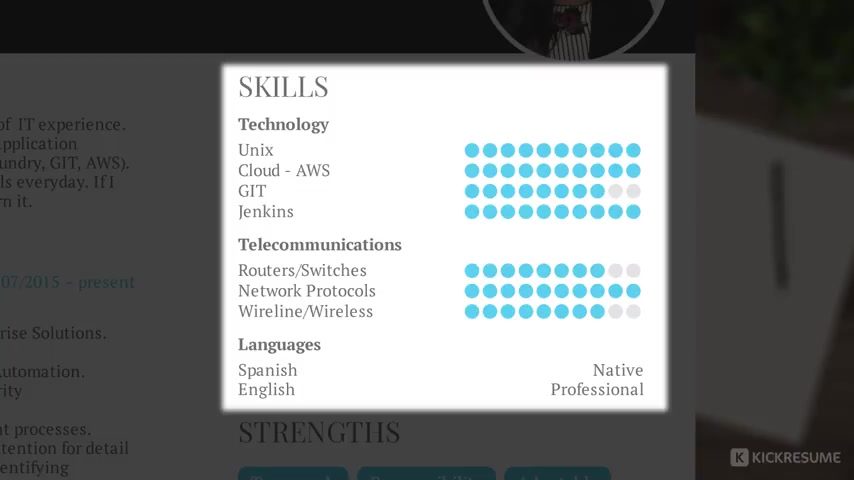
Those are skills , your future employers want to know what skills you can bring to the table .
And this section is where I tell them that on the other hand , being responsible or creative are traits not skills .
They belong to a different section .
Also , you don't have to include them if you don't have enough space left on the page , but they're still nice to mention because they can help you project the right kind of image .
For example , if you're a banker , you probably want to show you're more responsible than you're creative .
OK ?
We're almost at the end now .
And there are two things I really want to mention here .
If you've ever received an award or achieved something remarkable at work , give it a special place in your resume after all , these are your big guns and you want your future employers to see them and this way they will .
Well , fine , that's it .
That's the end .
Thank you for watching this resume guide .
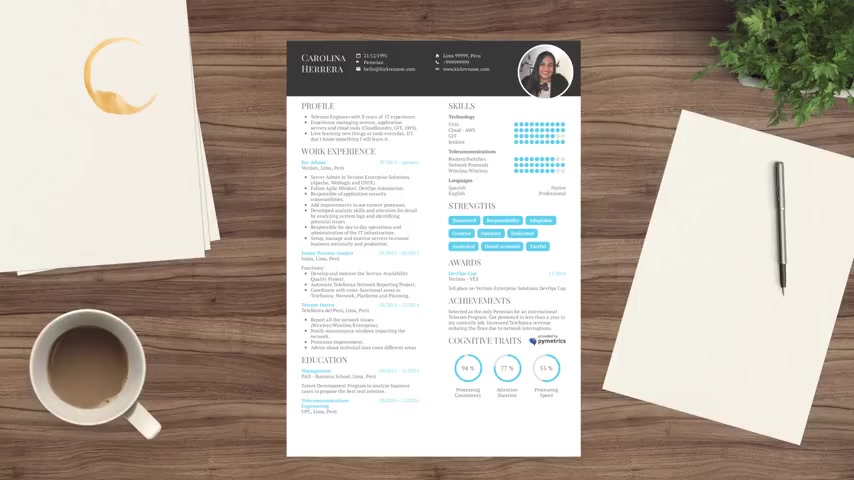
And if you want a beautiful resume without too much effort , create it at cake resume dot com .
It's a simple resume builder with plenty of beautiful templates that will help you impress any employer .
See you next time at gig resume dot com .
Are you looking for a way to reach a wider audience and get more views on your videos?
Our innovative video to text transcribing service can help you do just that.
We provide accurate transcriptions of your videos along with visual content that will help you attract new viewers and keep them engaged. Plus, our data analytics and ad campaign tools can help you monetize your content and maximize your revenue.
Let's partner up and take your video content to the next level!
Contact us today to learn more.